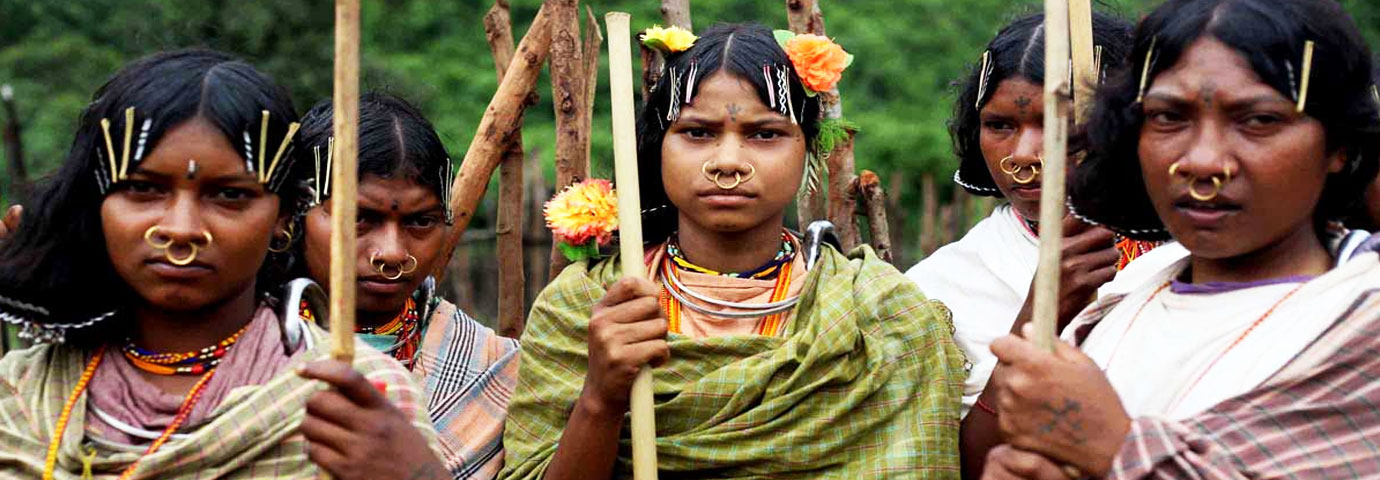Commonly referred to as the ‘Adivasis’, Tribals in India are one of the major and unique attractions reflecting the age-old culture and traditions of different communities. Unaware and untouched with the modern lifestyle, these tribals allure a lot of history buffs and tourists to India from all around the world.
If we talk about their population, India has the largest population of tribals in the whole world. There are approximately 84 million or may be more. All most all the locations are lined up with these tribals showcasing their ancient-everyday life. Some of the most important tribal community in the country includes the Great Andamanese, Khasis, Angamis, Mundas, Gaddis, Bhutias, Bhils, Bodos, Santhals and Gonds.
The tribes in India are settled in states like Andhra Pradesh, Bihar, Chhattisgarh, Gujarat, Jharkhand, Madhya Pradesh, Maharashtra, Odisha, Rajasthan, Tamil Nadu, West Bengal and some north-eastern states and the Andaman and Nicobar Islands.
These Adivasis follow a simple life style, have bare minimum needs and depend on fishing, agriculture and hunting. They speak their own language, celebrate their own festivals, have their own customs and wear their own traditional clothes and jewelry. In fact, some of the cultural practices which the tribal people follow are like a necessity to them and have been running in their community since centuries.
Let’s have a closer look into the lives of these tribals. Settled in Andaman, Great Andamanese is the Negrito tribe inhabitant. They are pure black in color and have heavy body. Andamani Hindi, Khora and Jera are some of the languages they speak. Usually they paint their body to protect themselves from insects and direct sunlight. They love to wear human bones around their neck and forehead. Their occupation and food is mainly dependent on hunting and agriculture.
Another important group of triblas in India include Bhils tribe, referred as the bow men of Rajasthan. These essentially form two separate groups as the pure or central bhils and Rajput or eastern Bhils and are largely inhabited in Madhya Pradesh, Maharashtra, Gujarat, Rajasthan and Tripura. The Bhils even find their mention in Ramayana, the great Hindu epic. A Bhil woman named Shabri served Ber (Indian Plum) to Lord Rama when he was searching for Devi Sita in the jungles of Dhandaka. This community form 39 percent of the population of Rajasthan and they speak Bhili, also an Indo Aryan language. The females of the tribe wear sarees and long skirts with brass accessories. Like that of Great Andamanese, they also depend on agriculture as a source of their income.
The other important tribe in India is the Santhals, which are mostly found in the Indian states of West Bengal, Orissa, Jharkhand, Bihar and Assam. Belonging to pre-Aryan era, Santhals are the third largest tribes in India. The language Santhals speak is Santhali, which is part of Austro-Asiatic language, Oriya, Hindi and Bengali. The plants and trees found in the forests that they live in are a very important part of their daily lives. Khasi tribe, is also worthy of a mention. Basically found in the Indian states of Assam Khasi Jaintia hills in Meghalaya, Jammu Kashmir, Manipur and West Bengal, they are the earliest new-arrival tribes speaking Khasi, an Austro Asiatic language.
Although some of the tribes in India are on the verge of extinction, but there others who are strongly protecting their culture and identity. Plan a trip to India and get a glimpse of these rare and unique Adivasis following different rituals and customs.


